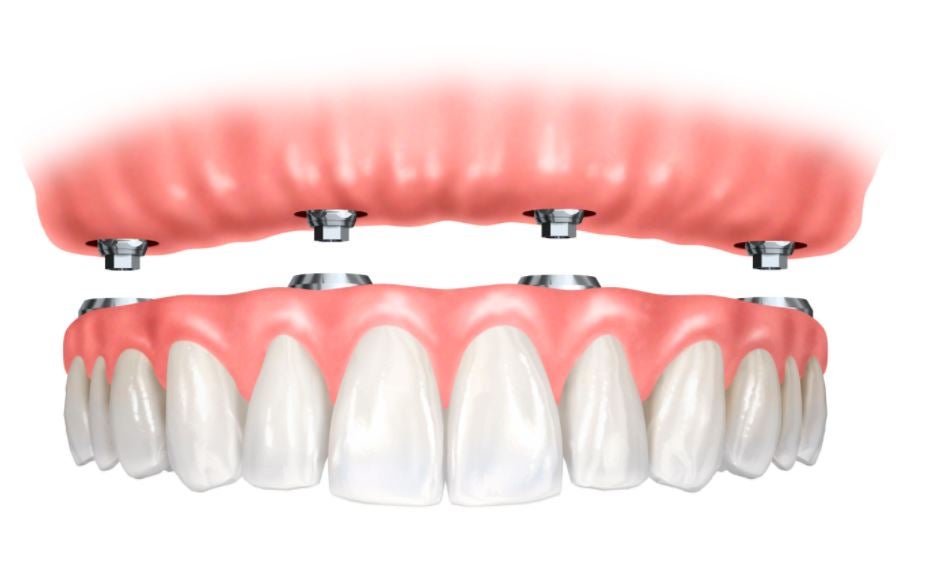The Ultimate Guide To Dental Sense
The Ultimate Guide To Dental Sense
Blog Article
See This Report about Dental Sense
Table of ContentsUnknown Facts About Dental SenseThe 6-Second Trick For Dental SenseMore About Dental SenseDental Sense for Dummies
are clinical tools operatively dental implanted into the jaw to restore a person's capability to chew or their look. They offer assistance for synthetic (phony) teeth, such as crowns, bridges, or dentures. When a tooth is lost because of injury or illness, an individual can experience complications such as rapid bone loss, faulty speech, or modifications to chewing patterns that result in pain.Oral implant systems include an oral implant body and dental implant joint and may likewise include an abutment addiction screw. Same day dental implants. The oral implant body is surgically inserted in the jawbone in area of the tooth's root. The oral implant joint is usually connected to the implant body by the abutment addiction screw and expands with gum tissues right into the mouth to support the affixed synthetic teeth
(https://www.openlearning.com/u/matthewmusic-spvoez/about/)Framework of The Oral Implant System picking dental implants, talk with your dental copyright concerning the prospective benefits and threats, and whether you are a prospect for the treatment. Things to think about: Your overall wellness is an essential consider determining whether you are a great prospect for oral implants, the length of time it will take to recover, and how much time the dental implant may remain in location.
Smoking might affect the recovery process and reduce the long-term success of the implant. The recovery process for the dental implant body may take several months or longer, during which time you normally have a temporary abutment in area of the tooth. the dental implant procedure: Carefully comply with the dental health instructions provided to you by your dental provider.
The Basic Principles Of Dental Sense
Implant failing can lead to the demand for an additional procedure to take care of or change the dental implant system. Brings back the ability to chew Restores cosmetic appearance Aids maintain the jawbone from diminishing because of bone loss Maintains the health of the bordering bone and gum tissues Aids keep surrounding (nearby) teeth stable Enhances quality of life Damage to bordering all-natural teeth during implant placement Injury to the surrounding tissues during surgical treatment, such as sinus opening Injury throughout surgical procedure (for instance, crack of surrounding jawbone) Poor function, such as seeming like the teeth do not attack with each other normally A sensation that the tooth is loose or turning in position resulting from a joint screw my link loosening Implant body failure (looseness of the implant body) because of systemic infection, which may be most likely in clients with unchecked diabetes mellitus as a result of regional infection in bone and gum tissues sustaining the dental implant body due to delayed healing, which might be most likely in patients that smoke Difficulty cleansing the gums around the dental implant, leading to poor oral hygiene Untreated periodontal illness Post-surgical numbness because of nerve impingement or damages Constantly notify wellness treatment providers and imaging specialists that you have dental implants before any magnetic resonance imaging (MRI) or x-ray treatments.
FDA is not knowledgeable about any damaging occasions reported for MRI or x-ray procedures with dental implants. Oral implants systems are commonly constructed from products that adhere to worldwide consensus requirements of the International Company for Standardization (ISO) or ASTM International. These standards have details of what makes a risk-free material.

An oral implant is a framework that replaces a missing out on tooth. With screw-like gadgets, the surgeon inserts an implant into the jawbone, and it acts as a support for a synthetic tooth, called a crown.
Some Known Details About Dental Sense
Some individuals are not qualified for oral implant surgical treatment. It is for oral surgeons to operate individuals with: acute illnessuncontrollable metabolic diseasebone or soft cells illness or infectionIf these issues are settled, an individual can have the surgical treatment. In, dental surgeons avoid operating individuals with: If individuals with any of the above undertake oral implant surgical procedure, there is a higher threat of the implant falling short.

Dental implant surgical procedure is a personalized procedure. It's not the exact same for every person. The complying with gives a basic summary of what you can anticipate your dental professional, oral cosmetic surgeon, periodontist or prosthodontist to do: Position the dental implant surgically. Offer you time to heal. Connect the message and last crown, bridge or denture.
Next, your specialist will meticulously put the dental implant right into your jaw. If your implant is near the front of your mouth, your dental expert will make a momentary tooth for you to wear till you recover.
Things about Dental Sense
Your company can tell you what to anticipate in your scenario. During the healing stage, your jawbone must fuse to the dental implant. This process, called osseointegration, is critical for security and long-term success. This procedure can take anywhere from 3 to 9 months. Sometimes, it might take longer.
When your implant heals, your dental professional can affix the joint (tiny port article) and your last repair (crown, bridge or denture). This usually takes concerning one hour to complete and may need a 2nd small surgery. You shouldn't really feel any pain throughout your oral implant treatment because your copyright will use medicine to numb your periodontals.
Report this page